At the current public hearings by the Adirondack Park Agency (APA) over the classification of the former Finch Paper lands, a common refrain among snowmobile trail expansion advocates has been something like “after the snow melts you’ll never even know we were there.” A trip to almost any snowmobile trail, after the snow has melted, will show that this argument is a reach.
Last week, PROTECT visited the controversial new Seventh Lake Mountain snowmobile trail in the Moose River Plains Wild Forest Area. The Department of Environmental Conservation (DEC) opened this trail during the winter and snowmobiles ran it and it was groomed. The impacts are clear. Six months later the signs of trail use and construction are still evident.
The pictures below show a scarred trail from construction and use, large bridges, wetlands filled with boards and debris for use, bench cuts, and cutting of wide swaths.
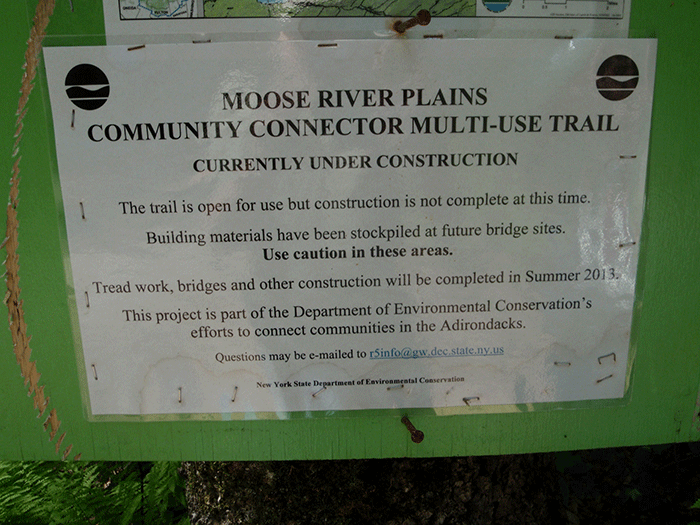
Sagamore Road end of the Seventh Lake Mountain trail. Trail sign denotes that DEC continues to work on this trail in 2013.
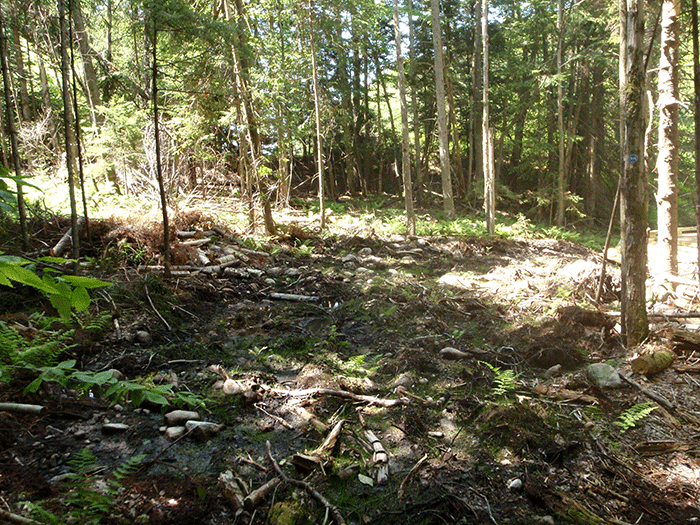
Seventh Lake Mountain snowmobile trail. Note extensive clearing and grading, not characteristic of a foot trail.
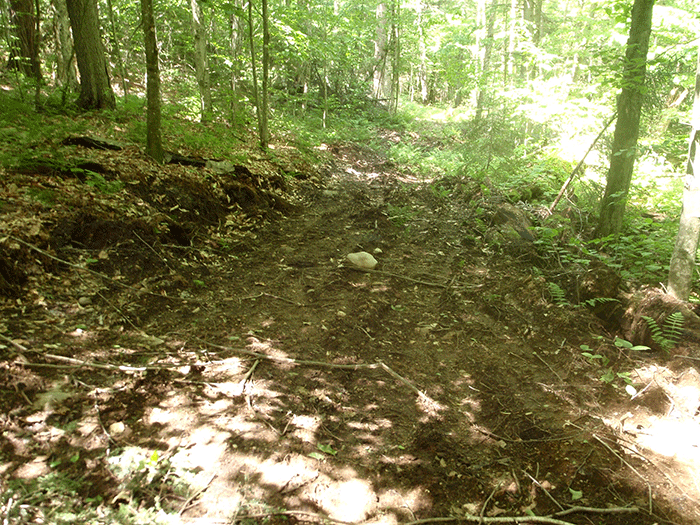
Seventh Lake Mountain snowmobile trail. Note extensive clearing and grading, not characteristic of a foot trail.
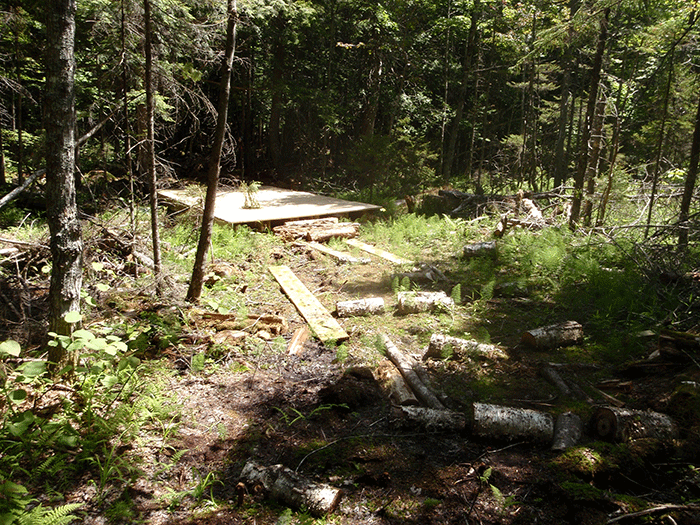
Seventh Lake Mountain snowmobile trail. Note oversized bridge not just for snowmobiles, but for large bulldozer-size groomers. Note also the filling of the wetland with boards and debris for the snowmobile trail.
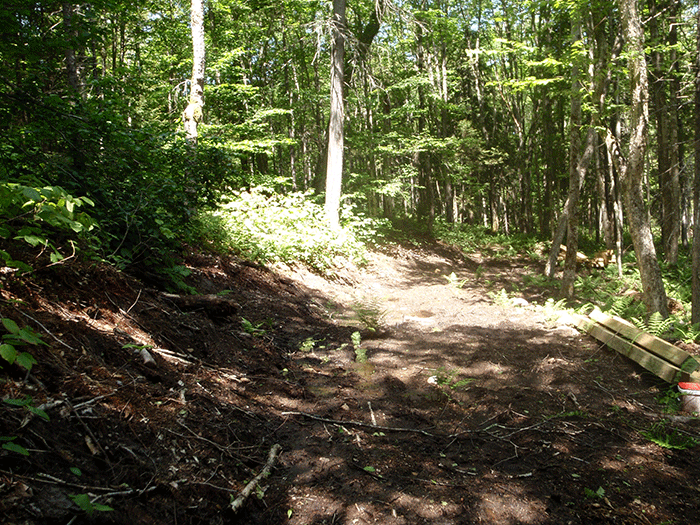
Seventh Lake Mountain snowmobile trail. Note extensive bench cutting on trailside, clearing and grading, not characteristic of a foot trail.
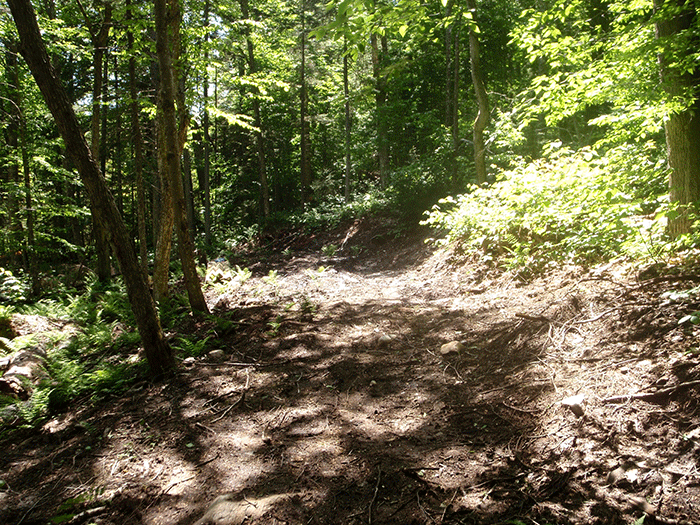
Note extensive bench cutting on trailside, clearing and grading, not characteristic of a foot trail.
The way that Class II Community Connector Snowmobile trails are built is very different than foot trails. Heavy machinery is used to flatten and grade trails. Bench cuts are sliced into the sides of trails. Rocks and stumps that protrude up six inches or more, are dug out and removed. Many trees are cut down. Many more small understory trees less than three inches in diameter are removed. Oversized bridges are built not for hikers and not for snowmobiles, but for large groomers.
The controversial new Seventh Lake Mountain snowmobile trail is a new Class II Community Connector snowmobile trail authorized by the NYS Snowmobile Plan, developed by the NYS Departments of Environmental Conservation and the Office of Parks, Recreation and Historic Preservation. The Snowmobile Plan does not have the force of law; it’s a department plan. In recognition that key parts of the Snowmobile Plan, especially those authorizing the 9-12-foor-wide Class II Community Connector Snowmobile trails, were in opposition to the Adirondack Park State Land Master Plan (SLMP), the APA and DEC teamed up to pass the Snowmobile Trail “Management Guidance” that stated blithely that Class II snowmobile trail construction and management complied with the SLMP.
PROTECT disputes this and notes that the Management Guidance is just that — guidance. Whereas the SLMP has the force of law; its enactment sanctioned by the State Legislature.
In February, PROTECT went to court to challenge the construction and grooming of Class II Community Connector snowmobile trails. PROTECT believes that state agencies should obey current laws when they build and maintain these trails. If they cannot build trails that comply with current law, then these agencies should amend existing law.





